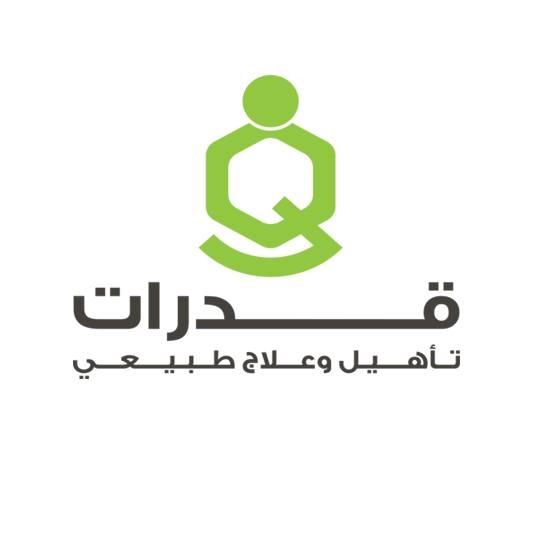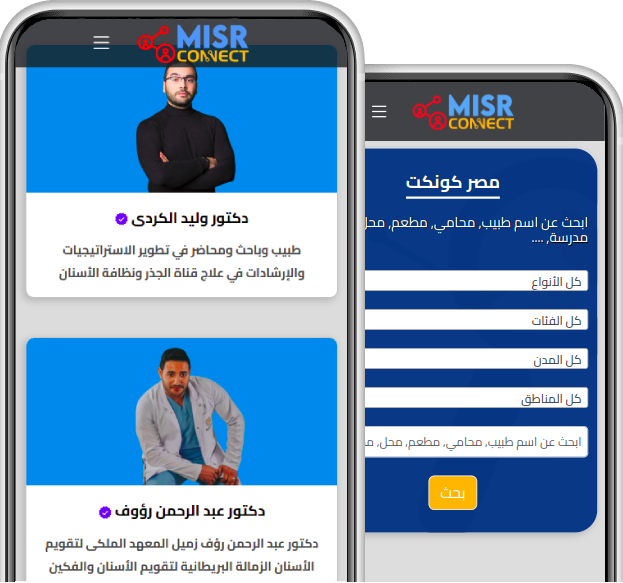Physical therapy is a non-medical treatment that relies on specialized techniques to improve movement, relieve pain, and enhance recovery for conditions affecting muscles, joints, and nerves.
Qudrat Center for Physiotherapy and Rehabilitation
Qudrat Center is a specialized medical facility dedicated to providing comprehensive and exceptional therapeutic services, aiming to improve patients' quality of life through innovative and effective treatment programs tailored to their individual needs.
- Phone: 01277774302
- Website: www.qudorat-eg.com/index_ar.php
- Opens at: 09:00
- Closes at: 19:00
Working Days
Sunday
Monday
Tuesday
Wednesday
Thursday
Saturday
Qudrat Center for Physiotherapy and Rehabilitation
💠 About the Center
Qudrat Center is a specialized medical facility dedicated to providing comprehensive and exceptional therapeutic services, aiming to improve patients' quality of life through innovative and effective treatment programs tailored to their individual needs.
🩺 Our Services
- Physiotherapy:
Offering solutions to relieve pain, enhance mobility, and promote recovery after injuries. - Rehabilitation Programs:
Customized programs to help patients recover after injuries or surgeries, restoring physical functions and capabilities. - Sports Rehabilitation:
Supporting athletes to improve performance and reduce injury risks through advanced rehabilitation plans. - Health Consultations:
Providing comprehensive advice on nutrition and lifestyle for optimal overall health.
🛠 Why Do We Recommend the Shockwave Therapy Device?
The Shockwave Therapy Device is an effective therapeutic technology used to treat various painful conditions and inflammations.
🔹 Device Benefits:
- Pain and Inflammation Reduction: Sends high-energy sound waves to help reduce pain and inflammation in affected areas.
- Accelerated Healing: Stimulates the healing process, leading to faster tissue repair and reduced swelling.
- Safe and Effective: A safe device for treating various conditions without severe side effects.
🔹 Conditions Treated with Shockwave Therapy:
- Plantar Fasciitis: Breaks down calcium deposits causing pain and stiffness in joints.
- Arthritis: Reduces pain and improves joint functions.
- Lower Back Pain: Treats back pain caused by muscle or ligament injuries.
- Chronic Inflammations: Addresses tendon and chronic muscle inflammations.
- Muscle Spasms: Relieves painful muscle spasms and cramps.
If you suffer from any of these conditions, consult your doctor to see if Shockwave Therapy is the right option for you.
👨⚕️ Our Team
Qudrat Center boasts a distinguished team of experienced and skilled physiotherapists, focusing on providing personalized care to each patient with coordination and professionalism.
🔒 Our Commitment to Quality
- Delivering comprehensive and high-quality therapeutic services.
- Ensuring patient safety through the use of advanced technologies and equipment.
- Achieving the best therapeutic outcomes with meticulous attention to detail.
🌿 Comfortable Environment
We strive to provide a supportive and relaxing therapeutic environment where patients feel comfortable during their treatment.
📍 Our Locations:
- Mohandessin: 92 Gamet El-Dowal El-Arabia Street.
📞 Contact us: 01277774302
Book now and enjoy the best medical care. Contact us via messages or visit us at the nearest branch.
5 0FAQ
Physical therapy is usually not painful if performed correctly, but some treatments may cause temporary discomfort, especially if they involve muscle or joint rehabilitation.
The duration of a session at physical therapy centers typically ranges from 30 to 60 minutes, depending on the patient's condition and the type of treatment required. The length of the session is tailored to ensure effective therapy while addressing the specific needs of each individual.
Workplace injuries that are treated in physical therapy centers typically involve the musculoskeletal system, such as muscles, joints, and tendons. Some of the common injuries include:
-
Muscle strains and tears:
- Muscle tears or strains caused by lifting heavy weights or repetitive movements.
- Muscle pain resulting from continuous pressure or strain.
-
Sprains of tendons or ligaments:
- Injuries caused by twisting or overstretching tendons or ligaments, especially in the ankle, knee, or wrist.
-
Fractures:
- Fractures resulting from accidents at work, requiring rehabilitation after healing to strengthen muscles and joints.
-
Spinal injuries and back pain:
- Lower back or neck pain resulting from lifting heavy loads or sitting for long periods in incorrect postures.
-
Tendonitis:
- Conditions like tendonitis in the shoulder or knee (e.g., rotator cuff tendonitis) caused by repetitive movements at work.
-
Carpal Tunnel Syndrome:
- A common condition among workers who perform repetitive hand or wrist movements, causing pressure on the median nerve in the wrist.
-
Stress from computer work:
- Neck, shoulder, and wrist pain, and tendonitis caused by prolonged computer use.
-
Injuries from poor posture:
- Back or neck pain caused by improper sitting or repetitive movements.
Physical therapy for these injuries includes various techniques such as therapeutic exercises, massage, heat or cold therapy, electrical stimulation, and flexibility and strengthening exercises to rehabilitate the patient and improve movement while reducing pain.
It depends on your condition. Some people feel improvement after the first session, while others may need 6-10 sessions or more.
It shouldn't be painful, but you might feel some tightness or mild soreness in the muscles, which is normal with the exercises.
Spinal curvature treatment in physical therapy centers focuses on strengthening the muscles surrounding the spine and improving the overall flexibility of the body to relieve symptoms and improve posture. Treatments provided in physical therapy centers include:
-
Therapeutic Exercises:
- Exercises aim to strengthen the back and abdominal muscles to provide better support for the spine.
- Exercises to improve balance and flexibility, which help improve posture and reduce curvature.
- Exercises to restore proper spinal alignment and reduce stress on the vertebrae.
-
Manual Techniques (Manipulation):
- Physical therapists use manual techniques to relieve muscle tension and improve spinal movement.
- These techniques can help alleviate pain and improve flexibility.
-
Massage Therapy:
- Massage helps relax tense muscles and relieve pain caused by spinal curvature.
- It also improves circulation and promotes relaxation.
-
Use of Supportive Devices:
- In some cases, physical therapists may recommend the use of supportive devices (braces) to support the spine during treatment or to prevent further progression of the condition.
-
Breathing Exercises and Relaxation Techniques:
- Deep breathing and relaxation techniques help reduce body tension and improve overall comfort.
-
Posture Guidance:
- Physical therapists guide patients on how to sit, stand, and walk correctly to avoid unnecessary pressure on the spine.
- They also teach patients how to adjust their environment, such as modifying desk height or using supportive chairs.
The main goal of physical therapy is to reduce pain, improve movement, and enhance the patient's quality of life, while working to reduce or prevent the progression of the curvature if it is in its early stages.
Electrical physical therapy sessions, such as those using electrical currents (e.g., interferential currents or nerve stimulation), are generally safe when performed under the supervision of a qualified physical therapist. However, they may have some risks or side effects in certain cases, such as:
- Skin irritation: Redness or irritation may occur at the site where the electrical current is applied.
- Pain or tingling sensation: Some patients may experience pain or a tingling feeling during the treatment.
- Interaction with medical devices: Electrical therapy should be avoided if the patient has implanted medical devices, such as a pacemaker.
- Pregnancy or skin conditions: Electrical therapy is usually not recommended for pregnant women or individuals with certain skin conditions.
It's important to consult with a physical therapist before starting treatment to ensure it is safe and suitable for your specific health condition.
Electric therapy sessions, or electrical stimulation therapy, are used to treat a variety of health conditions. The main goal of this therapy is to use electrical currents to stimulate nerves or muscles in a painless manner to improve health. Some of the conditions that can be treated with electrical therapy sessions include:
- Muscle and bone pain: Used to relieve back pain, neck pain, joint pain, and muscle pain.
- Soft tissue injuries: Such as tendon tears or muscle strains.
- Muscle spasms: Electrical stimulation can help reduce muscle spasms.
- Nerve stimulation: Helps improve blood circulation and reduce nerve pain, such as pain caused by sciatica.
- Muscle rehabilitation: Used after surgeries or accidents to rehabilitate muscles.
- Post-surgery healing stimulation: Helps speed up the healing process and reduce swelling or pain after surgeries.
This technique is generally safe when used under the supervision of medical professionals, but it should not be used in some cases, such as for people with pacemakers or pregnant women in certain situations.
Physical therapy focuses on pain relief and improving movement, while rehabilitation focuses on helping a person return to their normal life after injuries or surgeries.
It should have certified doctors, modern equipment, and assess your condition individually with proper attention. Ask people who have dealt with them before.
What's most important to us is not just financial profit, but the primary goal is the patient's benefit and achieving the best possible result with the least pain and in the shortest time. We want the patient to be satisfied with their condition and become an ambassador for us among their family and friends.
The consultation fee is only 200 EGP.
The prices for sessions range between 300 to 600 EGP, depending on each case and the equipment used in the session.

